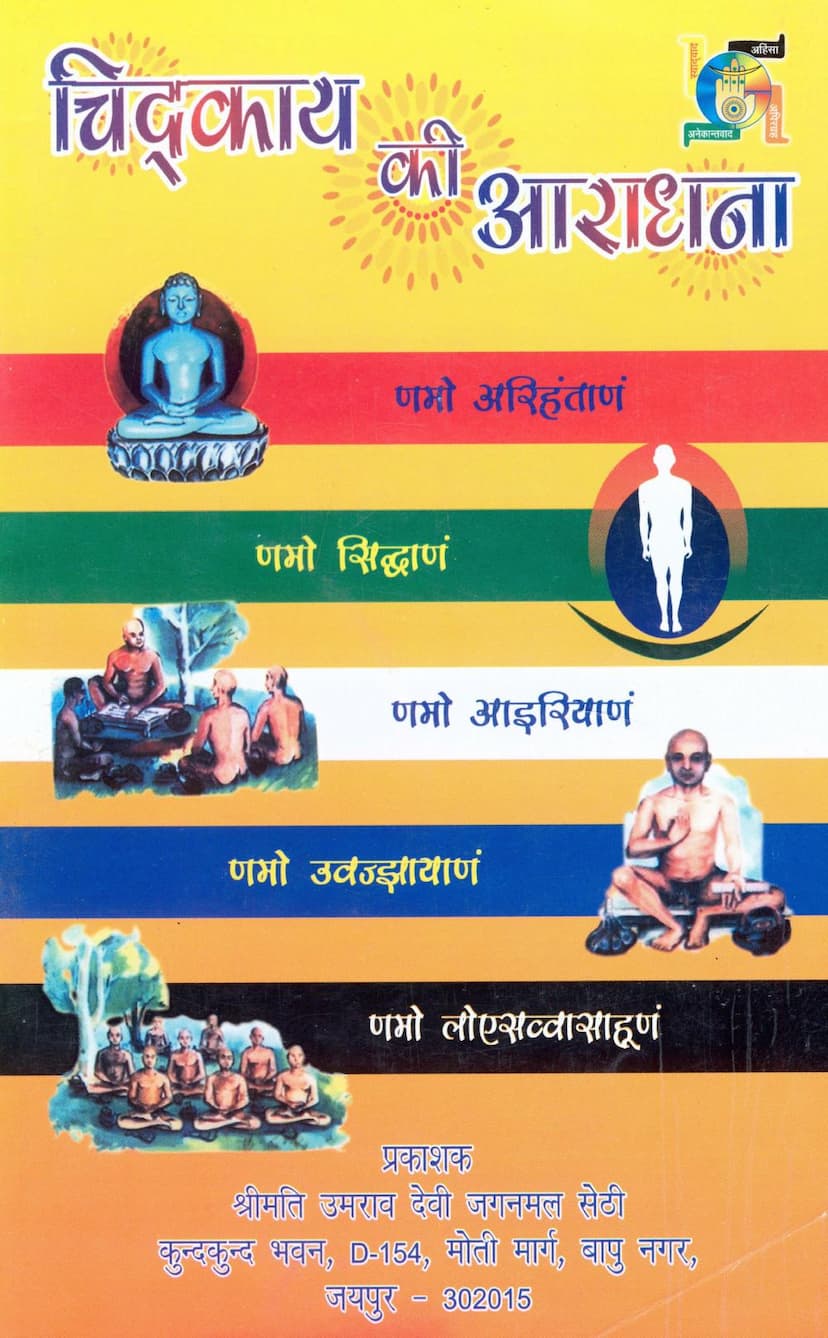Chidkay Ki Aradhana
Added to library: September 1, 2025

Summary
This document is a Jain religious text titled "Chidkay Ki Aradhana" (Worship of the Soul) by Jaganmal Sethi. The core message of the book is that the true path to liberation (moksha) lies in the worship and realization of one's own soul, referred to as "Chidkay" (the soul entity or conscious body).
Here's a comprehensive summary of the key themes and teachings:
The Centrality of the Soul (Chidkay):
- The Soul as God: The book repeatedly emphasizes that the soul itself is God, the divine, the pure, the blissful, and the omniscient. It is described as being eternally present within the physical body, residing from the tips of the toes to the crown of the head.
- Internal Worship: The primary focus is on turning inward and realizing this divine soul. All external worship, rituals, and worldly pursuits are considered secondary or even distractions if the internal worship of the soul is neglected.
- The Path to Liberation: The ultimate goal is moksha, and this is achieved solely through the worship and absorption in one's own soul (Chidkay). External actions or accumulations cannot grant liberation; only the realization of the soul can.
Key Principles and Practices:
- Sammyagdarshan (Right Faith): The book stresses that the journey begins with developing right faith in the soul's true nature. This involves understanding the soul as pure, eternal, and independent of external factors.
- Introspection and Meditation (Dhyana): The core practice advocated is introspection, turning the gaze inward, and meditating on the soul. This is described as the way to experience the profound joy and peace of the soul.
- Detachment from External Objects: The text strongly advises against seeking happiness in external objects, sensory pleasures, worldly possessions, relationships, or even the physical body. These are considered transient and a source of suffering.
- Self-Reliance: The soul is inherently complete and self-sufficient. It possesses infinite power and bliss within itself. The book encourages reliance on this inner strength rather than external dependencies.
- Overcoming Ignorance and Delusion (Moha): The primary obstacle to realizing the soul is ignorance (avidya) and delusion (moha), which lead to attachment and aversion. The book aims to dispel these through self-inquiry and the understanding of the soul's true nature.
- The Illusion of External Reality: The physical world, including the body and its experiences, is presented as an illusion or a temporary dwelling. True reality lies within the soul.
- The Importance of the Human Birth: The human birth is considered a rare and precious opportunity to achieve spiritual liberation. It is a boon that even celestial beings desire. Therefore, this life should not be wasted on worldly pursuits.
- The Soul's True Attributes: The book elaborates on the soul's inherent qualities, describing it as pure, formless, eternal, blissful, powerful, peaceful, conscious, and undivided. Various verses and passages highlight these attributes in detail.
- Renunciation of Worldly Desires: The book calls for the renunciation of the five senses and the mind, as their engagement with external objects leads to the bondage of karma and suffering.
The Nature of the Soul (Chidkay) as Described in Various Ways:
The book uses numerous metaphors and descriptions to explain the nature of the soul, including:
- The abode of God (Devalaya)
- A repository of infinite qualities
- A jewel, a treasure
- A beacon of light, a divine flame
- The ocean of bliss
- A treasure of nectar
- A tree of desire-fulfillment (Kalpavriksha)
- The essence of all scriptures and teachings
- The ultimate refuge (Parama Sharana)
The Book's Structure and Content:
The book is structured as a series of affirmations or self-realizations of the soul. It begins with introductory pages explaining the book's purpose and then delves into numerous verses, each describing a different aspect or attribute of the soul, often in the form of "I am..." or "The soul is...". These are presented as direct experiences and realizations of the soul's true nature.
The latter part of the book specifically addresses the soul's freedom from the afflictions of:
- Kashayas (Passions): Anger, pride, delusion, and greed.
- Indriyas (Senses): Touch, taste, smell, sight, and hearing, and their respective worldly objects.
- Karma: Bhavkarma (internal passions), Dravyakarma (external karma), and Nokarma (physical manifestations).
- Attachment and Desire: For fame, gain, praise, and worldly pleasures.
- Maya (Illusion/Deception): Both internal and external.
Overall Message:
"Chidkay Ki Aradhana" is a profound spiritual guide that urges readers to look within, discover their true divine nature, and find liberation through the unwavering worship and absorption of their own soul. It emphasizes that true happiness and fulfillment are not found in the external world but are inherent qualities of the soul, waiting to be realized through focused introspection and meditation. The book serves as a call to awaken to one's true self and embark on the inward journey toward eternal bliss and liberation.